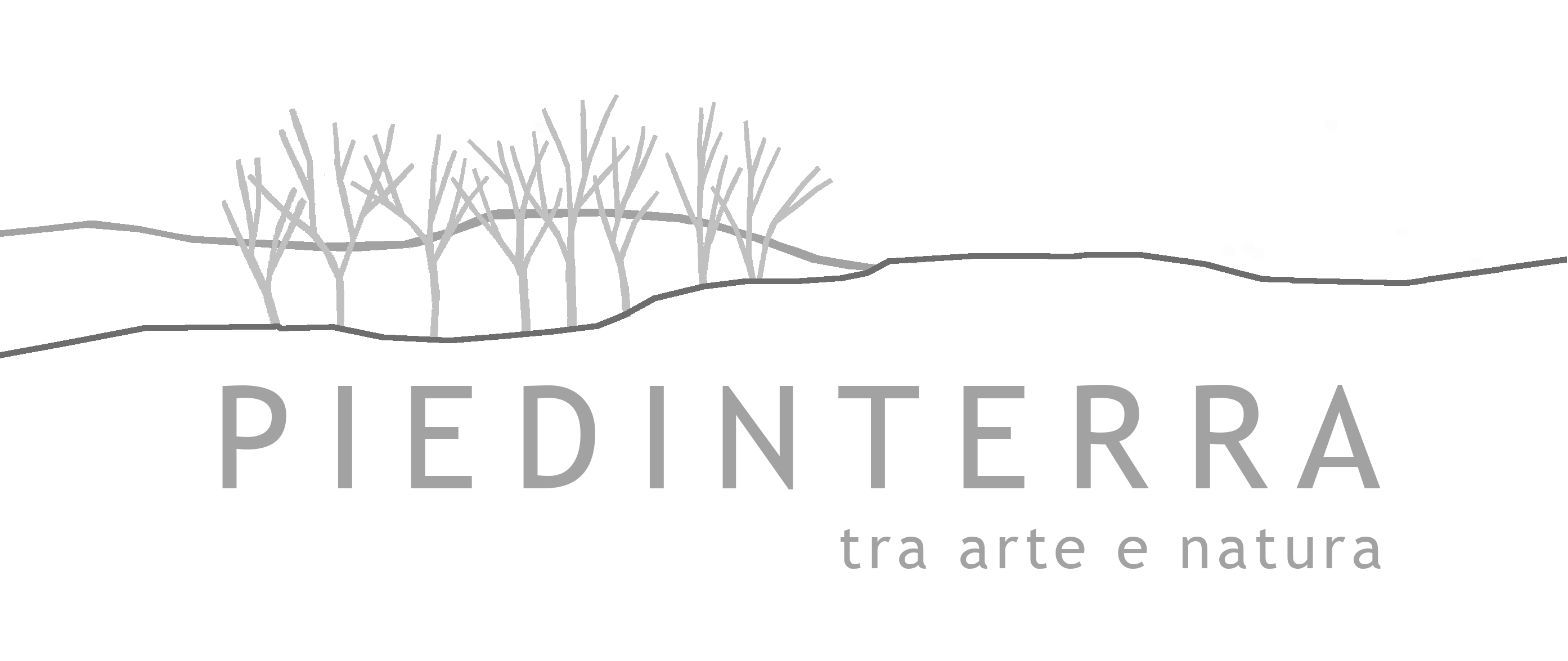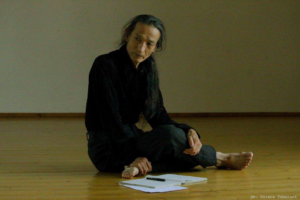seminario di danza Butoh
1/5 settembre
Con i 5 ideogrammi ‘han-gi-tai-to-kan’ (tormento, sacrificio, natura maestosa, danza e specchio) il fondatore del Butoh, Tatsumi Hijikata, sintetizzo` l’importanza di danzare sacrificando anima e corpo e di trattare la natura come uno specchio o come la nostra maestra. Da queste parole emergeva la necessità di danzare un’entita` materiale nascosta nel nostro corpo, trascendendo societa`, istituzioni e norme. Quando percepiamo il nostro corpo come un’entita` materiale, le morali, le intenzioni oscure, i desideri, i concetti di bellezza, vita e morte, violenza ed erotismo divengono come delle piccole foglie; esse sono trascinate da un flusso impetuoso in un vortice di un nulla immensamente sincero, esistente all’interno di tutte le innocenti forme originarie dell’universo. Per i danzatori questo nulla deve avere intensita`.
Masaki Iwana
dancer-choreographer- dance teacher-film director
One of the most acclaimed Butoh performers in Japan today, one of the rare Butoh performers in the world who maintain the original Butoh spirit.
Masaki Iwana began his dance career outside the “Butoh genealogy” in 1975. Until 1982 he presented 150 experimental performances in which he stood straight, completely naked and perfectly still. Since then, in Europe as well as Japan, Iwana has presented his performances and workshops continuously and has created works which are built on his sharpened aesthetic in 100 cities – 40 countries. Iwana represents the institute for the research of Butoh La Maison du Butoh Blanc. Moreover in 2006 he produced and created a theatrical film ‘Vermilion Souls’ which got Best film award at Portobero IFF in UK in 2009, followed by the 2nd film ‘A Summer Family’ 2010. ‘www.iwanabutoh.com
Butoh Blanc (White Butoh)
My White Butoh is not intended as an antithesis to ‘ankoku butoh’ (black butoh or the dance of darkness) of Tatsumi Hijikata, the founder of butoh. Rather, by using the word ‘white’ I stress the philosophical advocacy of ankoku butoh: a butoh dancer must completely expose the ‘darkness of his own existence.’ In this interpretation, I amplify it and assert that such exposure should be so complete that it comes under the ‘white sun,’ meaning a perfectly clear and cloudness light.
Almost all modern dances in Western countries, or worldwide, are ‘created’ with the basic method of first clarifying a concept and then collecting and arranging dancers’ external movements and forms to realize that concept. In contrast, one of butoh’s largest characteristics is to produce — or more accurately, ‘give birth to’ — dances by guilding and drawing out the ‘dance’ already immanent in the dancer’s body (this ‘dance’ may be referred to as ‘original experience’; the word ‘inner landscape’ is often used in the butoh world). As a result, some butoh dances do not involve specific or phenomenological forms and movements as their basic element.
Butoh dancers have always referred to the body with that immanent ‘original landscape’ (‘dance’) as ‘nikutai,’ to be distinguished from the physical body, or flesh, as a biological entity. To realize ‘nikutai,’ a butoh dancer must recognize and amass personal experiences, memories and bodily habits; and since butoh is an art of expression, he must also have the ability to ‘montage’ those personal elements.
Difficulties butoh dancers are often faced with are related to the difficulties of reaizing ‘nikutai.’ Difficulties, or sometimes misunderstandings, on the part of butoh audiences, on the other hand, lie in their common sense, with which they seek to see ‘nikutai’ with the immanent ‘inner landscape’ only as a visible object, or as specific and phenomenological forms and movements. White Butoh’s thrust, however, is to go to the very bottom of the essence of butoh which is prior to forms and movements; namely, to pursue the realities of life. It goes without saying that it is not an easy task.
Vitto/alloggio
a Piedinterra c’è una stanza con pavimento in legno che useremo come stanza dormitorio con materassini a terra, ma chi preferisce avere più privacy può mettere la tenda; i pasti vengono preparati da una cuoca e usiamo prodotti bio il più possibile a km0. A turni di tre persone aiutiamo a preparare/sparecchiare, preparare la colazione, sistemare il “campo” e la pedana
NON SIAMO UN AGRITURISMO STARE A PIEDINTERRA IMPLICA AVERE UN PO’ DI ADATTABILITA’ E COLLABORAZIONE oltre al rispettto per la natura
Alcune strutture sono ancora in sistemazione, come la nostra casa, ma troverai la massima disponibilità per farti sentire a tu agio anche nella semplicità degli alloggi
Arrivi/partenze
ATTENZIONE: I partecipanti verranno raggiunti alla stazione degli autobus di Varzi il pomeriggio prima dell’inizio del laboratorio e riportati alla stessa stazione il mattino seguente alla fine del laboratorio.
Per ogni altra diversa esigenza fateci sapere con anticipo.
Areoporti vicini: Milano e Genova Treno per Voghera e da qui autobus per VarziThe Intensity of Nothingness
Butoh dance workshop with Masaki Iwana
September 1-5
Open for performers, researchers, dancers, visual artists, architects and all other professional artists who might be interested in participation, the course provides body training in contemporary Japanese dance butoh and the way they can be individually interpreted as a body language.
The course allows the participants to;
1) Study of the basic principles of movement analyzing the composition and function of body;
2) Discover body itself not simply as forms and movements, but having general possible status of inner landscape as model and sources;
3) Use poems and words as sources to transform imagination (ideal product) into image (visible product) not depending on standards (signs, symbols);
4) Train through improvisational dance how to select instantly the most exact elements to be danced among several (or more) possibilities which are present right before action and behavour ; that means generally to train improvisation.
The course suggests a system of training exercises in 4 directions:
body training;
defined dance;
inspiration dance;
improvisational dance.
With five kanji characters, ‘han – gi – tai – to – kan’ (grilling, sacrificee, great nature, dance, mirror), butoh’s founder Tatsumi Hijikata encapsulated the importance to dancing of sacrificing our own body and soul, and treating nature as our mirror or teacher. Through these words, he urged that we dance a material entity hidden within our body, transcending society, institutions and norms. Once we perceive our body as a material entity; morals, dark intentions, desires, concepts of beauty, life and death, violence and eros become like tiny leaves are swept along by a torrent into a vortex of the immensely thruthful nothingness existing within all the blameless origins of the universe. For dancers this nothingness must have intensity.
Masaki Iwana
dancer-choreographer- dance teacher-film director
One of the most acclaimed Butoh performers in Japan today, one of the rare Butoh performers in the world who maintain the original Butoh spirit.
Masaki Iwana began his dance career outside the “Butoh genealogy” in 1975. Until 1982 he presented 150 experimental performances in which he stood straight, completely naked and perfectly still. Since then, in Europe as well as Japan, Iwana has presented his performances and workshops continuously and has created works which are built on his sharpened aesthetic in 100 cities – 40 countries. Iwana represents the institute for the research of Butoh La Maison du Butoh Blanc. Moreover in 2006 he produced and created a theatrical film ‘Vermilion Souls’ which got Best film award at Portobero IFF in UK in 2009, followed by the 2nd film ‘A Summer Family’ 2010. ‘www.iwanabutoh.com
Butoh Blanc (White Butoh)
My White Butoh is not intended as an antithesis to ‘ankoku butoh’ (black butoh or the dance of darkness) of Tatsumi Hijikata, the founder of butoh. Rather, by using the word ‘white’ I stress the philosophical advocacy of ankoku butoh: a butoh dancer must completely expose the ‘darkness of his own existence.’ In this interpretation, I amplify it and assert that such exposure should be so complete that it comes under the ‘white sun,’ meaning a perfectly clear and cloudness light.
Almost all modern dances in Western countries, or worldwide, are ‘created’ with the basic method of first clarifying a concept and then collecting and arranging dancers’ external movements and forms to realize that concept. In contrast, one of butoh’s largest characteristics is to produce — or more accurately, ‘give birth to’ — dances by guilding and drawing out the ‘dance’ already immanent in the dancer’s body (this ‘dance’ may be referred to as ‘original experience’; the word ‘inner landscape’ is often used in the butoh world). As a result, some butoh dances do not involve specific or phenomenological forms and movements as their basic element.
Butoh dancers have always referred to the body with that immanent ‘original landscape’ (‘dance’) as ‘nikutai,’ to be distinguished from the physical body, or flesh, as a biological entity. To realize ‘nikutai,’ a butoh dancer must recognize and amass personal experiences, memories and bodily habits; and since butoh is an art of expression, he must also have the ability to ‘montage’ those personal elements.
Difficulties butoh dancers are often faced with are related to the difficulties of reaizing ‘nikutai.’ Difficulties, or sometimes misunderstandings, on the part of butoh audiences, on the other hand, lie in their common sense, with which they seek to see ‘nikutai’ with the immanent ‘inner landscape’ only as a visible object, or as specific and phenomenological forms and movements. White Butoh’s thrust, however, is to go to the very bottom of the essence of butoh which is prior to forms and movements; namely, to pursue the realities of life. It goes without saying that it is not an easy task.
Meals/Accomodation
a Piedinterra accommodation is possible both indoor, in a dorm room- wooden floor room with mat on the floor, or outdoor, with private tents in the land surrounding the farm. A cook will prepare our meals with organic food mostly coming from farms close by. Rounds of three of us will help in setting for meals and dancing floor.
WE ARE NOT AN AGRITOURISM; ADAPTABILITY AND RESPECT FOR NATURE ARE NECESSARY FOR STAYING AT PIEDINTERRA
Some infrastructures, like our house, are still under construction, but we will do our best to make you feel comfortable in our accommodation.
arrivals/departures
PAY ATTENTION: Partecipants are picked up at Varzi bus station the afternoon before the beginning of the workshop and drop down at the same bus station the morning after the end of the workshop.
If you can’t fit into this schedule please tell us in advance
Closest airports: Milan and Genova
Train to Voghera and from there bus to Varzi

